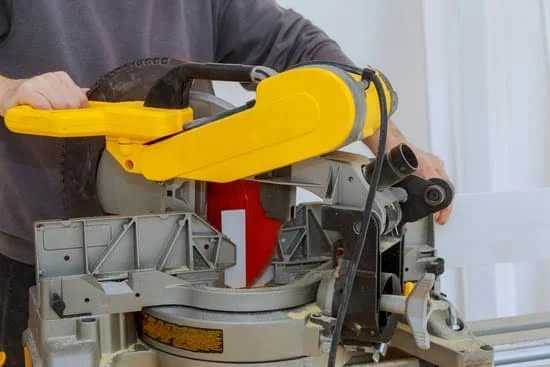Are you wondering what size nailer for woodworking is right for you? Woodworking nailers come in different sizes and types, each designed for specific purposes. From brad to framing nailers, understanding the importance of nail size in woodworking projects is crucial for achieving professional results. In this article, we will explore the different sizes and types of woodworking nailers, as well as provide tips for choosing the right size nailer for your projects.
When it comes to woodworking, selecting the appropriate size nailer is essential for ensuring the strength and visual appeal of your finished pieces. Whether you are working on small-scale projects like trim and molding or tackling larger tasks such as framing and flooring, choosing the right size nailer can make a significant difference in the quality of your work.
With various types of woodworking nailers available, it’s important to understand their differences and applications to determine which one best suits your needs.
In the following sections, we will delve into the specifics of brad, finish, framing, and flooring nailers. We will also discuss the factors that should be taken into consideration when choosing a nailer size for your woodworking projects. By understanding these key concepts, you can ensure that you select a nailer that not only meets but exceeds your expectations in terms of performance and efficiency.
Understanding the Importance of Nail Size in Woodworking Projects
Nail size is a critical consideration in any woodworking project, as it determines the strength and durability of the joint or attachment. Choosing the right size nailer for woodworking can make all the difference in the success of your projects. The size of the nail used must be appropriate for the type and thickness of wood being joined together.
The most common sizes for woodworking nailers are 15-gauge and 16-gauge. A 15-gauge nailer is ideal for heavy-duty projects such as framing, installing large trim, and attaching baseboards. On the other hand, a 16-gauge nailer is more versatile and suitable for a wide range of woodworking tasks including crown molding, chair rails, and window casings. For smaller, delicate trim work or narrow pieces of wood, an 18-gauge brad nailer may be more appropriate.
Understanding the importance of nail size in woodworking projects also involves considering the length of the nails. The length should be sufficient to penetrate through the first piece of wood and into the second piece without protruding out. It’s also crucial to ensure that the nails provide enough holding power without splitting or damaging the wood. Therefore, carefully matching the nail size to your woodworking project is essential for achieving professional-looking results and ensuring long-lasting durability.
| Nailer Size | Recommended Woodworking Projects |
|---|---|
| 15-gauge | Framing, large trim installation, baseboards |
| 16-gauge | Crown molding, chair rails, window casings |
| 18-gauge brad nailer | Smaller trim work, narrow pieces of wood |
Types of Woodworking Nailers
Woodworking nailers come in various types and sizes, each designed for specific purposes. Understanding the different types of woodworking nailers can help you choose the right one for your projects. Here are the common types of woodworking nailers:
- Brad Nailer: A brad nailer is designed for precision and delicate woodworking tasks. It uses thin 18-gauge nails, making it ideal for trim work, crown molding, and other detailed woodworking projects where a larger nail would be too visible.
- Finish Nailer: Finish nailers are versatile tools that use 15 or 16-gauge nails, making them suitable for a wide range of woodworking applications. They are commonly used for installing baseboards, door and window casings, furniture construction, and other finishing work.
- Framing Nailer: A framing nailer is used for heavy-duty woodworking tasks such as building decks, framing walls, and constructing outdoor structures. It uses larger 10 to 12-gauge nails that provide strong holding power for structural framing.
- Flooring Nailer: Specifically designed for installing hardwood flooring, a flooring nailer uses cleats or staples to secure flooring materials to the subfloor. There are manual and pneumatic options available, with both providing efficient installation of flooring materials.
When choosing the right size nailer for your woodworking projects, it’s essential to consider the type of wood you’ll be working with and the specific tasks you’ll be undertaking. Each type of nailer has its own set of recommended applications based on the size and thickness of the material being used. Understanding these differences will help you select the most suitable size nailer for your woodworking needs.
Factors to Consider When Choosing the Right Size Nailer for Your Woodworking Projects
When choosing the right size nailer for your woodworking projects, it is important to consider several factors to ensure that you are using the appropriate tool for the job. One of the main considerations is the type of material you will be working with.
For softer woods, such as pine or cedar, a smaller nailer like a brad or finish nailer may be sufficient. However, for hardwoods like oak or maple, a larger nailer such as a framing nailer may be required.
Another important factor to consider is the size and thickness of the wood pieces being used in your project. Thicker pieces of wood will require longer and thicker nails to provide a secure hold. Additionally, if you are working with different sizes of wood within the same project, you may need to have multiple size nailers on hand to ensure that each piece is properly secured.
The type of joint you will be creating also plays a significant role in determining what size nailer to use. For simple butt joints or edge-to-edge joints, a smaller nailer may suffice. However, for more complex joints such as mitered or tongue-and-groove, a larger and more powerful nailer may be necessary to provide adequate strength and support.
| Factors to Consider | Considerations |
|---|---|
| Material | Softwood vs Hardwood |
| Wood Thickness | Thicker wood requires longer and thicker nails |
| Type of Joint | Simpel joints vs complex joints |
Common Woodworking Projects and the Recommended Nailer Sizes
Woodworking projects can vary greatly in size and complexity, so it’s important to choose the right size nailer for the job. Here are some common woodworking projects and the recommended nailer sizes to use:
Building Cabinets
When building cabinets, a finish nailer is typically used. A 15-gauge or 16-gauge finish nailer is ideal for this type of project. These nailers are perfect for attaching trim, molding, and other finishing pieces to your cabinets with ease.
Constructing Furniture
For constructing furniture such as tables, chairs, and dressers, a brad nailer is often the best choice. Brad nailers come in 18-gauge or 23-gauge sizes and are suitable for attaching thin pieces of wood together without splitting them.
Installing Baseboards and Crown Molding
When installing baseboards or crown molding, a brad or finish nailer can be used depending on the thickness of the material. If you’re working with thicker trim, a finish nailer with 15-gauge nails will provide a stronger hold compared to a brad nailer.
By understanding the specific needs of each woodworking project, you can determine what size nailer for woodworking would be most appropriate for the job at hand. Whether it’s a small craft project or a large furniture build, choosing the right size nailer will ensure that your work is sturdy and professional-looking.
Tips for Using Different Size Nailers in Woodworking
When it comes to using different size nailers in woodworking, there are a few tips and tricks to keep in mind to ensure that your projects turn out beautifully. Whether you are using a brad nailer, finish nailer, framing nailer, or flooring nailer, these tips will help you achieve professional results every time.
Here are some valuable tips for using different size nailers in woodworking:
- Choose the right size and type of nail for your project: Depending on the thickness and type of wood you are working with, as well as the specific requirements of your project, you will need to select the appropriate nail size and type. Using the wrong size can lead to structural weakness or even damage to your woodwork.
- Adjust the air pressure or depth settings: Most pneumatic nailers allow you to adjust the air pressure or depth settings to control how far the nails are driven into the wood. This is crucial for achieving a clean and professional finish, especially when using different sizes of nails.
- Practice proper technique: Whether you are using a small brad nailer for delicate trim work or a larger framing nailer for structural framing, it’s important to practice proper technique. This includes holding the nailer at the correct angle, maintaining consistent pressure, and positioning the nails accurately.
By following these tips for using different size nailers in woodworking projects, you can ensure that your finished pieces look polished and professional, regardless of the size of nails used. Remember that practice makes perfect, so don’t be afraid to experiment and refine your techniques as you gain experience with different types and sizes of woodworking nailers.
Comparison of Pneumatic vs Cordless Nailers for Woodworking
When it comes to choosing the right nailer for your woodworking projects, one of the key decisions you’ll need to make is whether to go with a pneumatic or cordless nailer. Both options have their own set of advantages and disadvantages, so it’s important to weigh these factors carefully before making your decision.
Pros and Cons of Pneumatic Nailers
Pneumatic nailers are powered by compressed air, which means you’ll need an air compressor to operate them. While this can add some initial cost and setup time to your woodworking projects, pneumatic nailers are generally more powerful and can drive larger nails more effortlessly. They also tend to be more durable and have a longer lifespan than cordless nailers.
On the downside, pneumatic nailers require an air hose, which can limit your mobility and make it difficult to work in tight spaces. They also tend to be louder than cordless nailers, which may be a consideration if you’re working in a residential area or shared workspace.
Pros and Cons of Cordless Nailers
Cordless nailers, on the other hand, are powered by rechargeable batteries, which makes them extremely portable and convenient to use. This makes them a great option for woodworking projects that require a lot of mobility or that need to be completed in remote locations.
However, cordless nailers are generally less powerful than their pneumatic counterparts and may struggle with driving larger nails into hardwoods or other tough materials. Battery life can also be a concern, especially on longer projects where you may need to recharge multiple times.
Ultimately, the choice between pneumatic and cordless nailers will depend on the specific needs of your woodworking projects. It’s important to consider factors such as power, portability, noise level, and overall convenience when making your decision on what size nailer for woodworking is best suited for your needs.
Conclusion
In conclusion, finding the perfect size nailer for your woodworking needs is crucial for the success of your projects. As discussed in this article, the size of the nailer plays a significant role in the outcome of your woodworking projects. Understanding the importance of nail size and choosing the right type of nailer, whether it be a brad, finish, framing, or flooring nailer, is essential for achieving professional and durable results.
When considering what size nailer for woodworking, it is important to take into account the specific factors mentioned in this article, such as the type of wood and the thickness of the materials being used. Additionally, understanding the recommended nail sizes for common woodworking projects can greatly assist in selecting the most suitable nailer for your needs.
Furthermore, utilizing different size nailers in woodworking requires careful consideration and familiarity with their functionalities. Whether using pneumatic or cordless nailers, following tips and best practices for their usage can help ensure efficiency and precision in your woodworking endeavors. Ultimately, by taking into consideration all these factors and guidelines, you can confidently find the perfect size nailer for your woodworking needs and achieve outstanding results in your projects.
Frequently Asked Questions
What Size Nail Gun Do I Need Woodworking?
The size of nail gun you need for woodworking depends on the specific project and the type of wood being used. For general woodworking tasks, a 16-gauge or 18-gauge nail gun is typically suitable.
What Nailers Are Most Often Used in Woodworking?
In woodworking, brad nailers and finish nailers are most often used. Brad nailers are ideal for delicate trim work and thin wood materials, while finish nailers are better suited for heavier trim and larger woodworking projects.
What Is Better 16 Gauge or 18 Gauge Nailer?
Whether a 16-gauge or 18-gauge nailer is better depends on the specific requirements of the project. A 16-gauge nailer provides more holding power and is suitable for thicker wood, while an 18-gauge nailer leaves smaller holes and is ideal for delicate trim work.

Hi everyone! I’m a woodworker and blogger, and this is my woodworking blog. In my blog, I share tips and tricks for woodworkers of all skill levels, as well as project ideas that you can try yourself.





